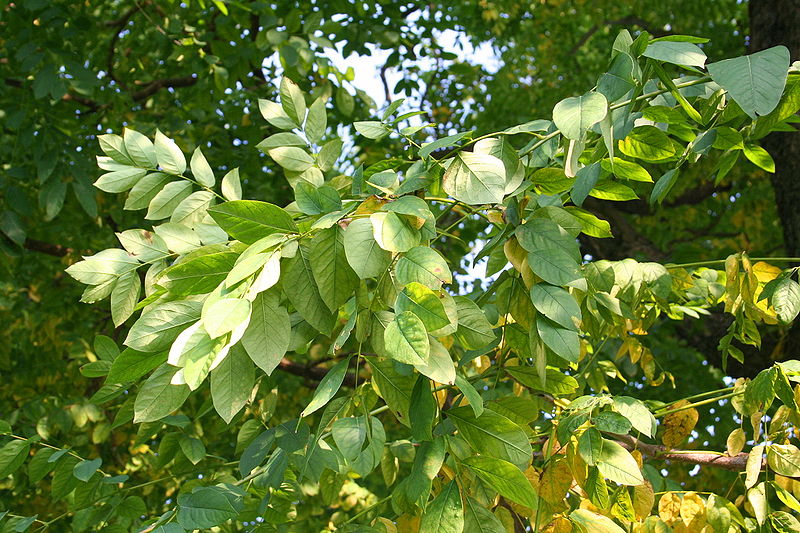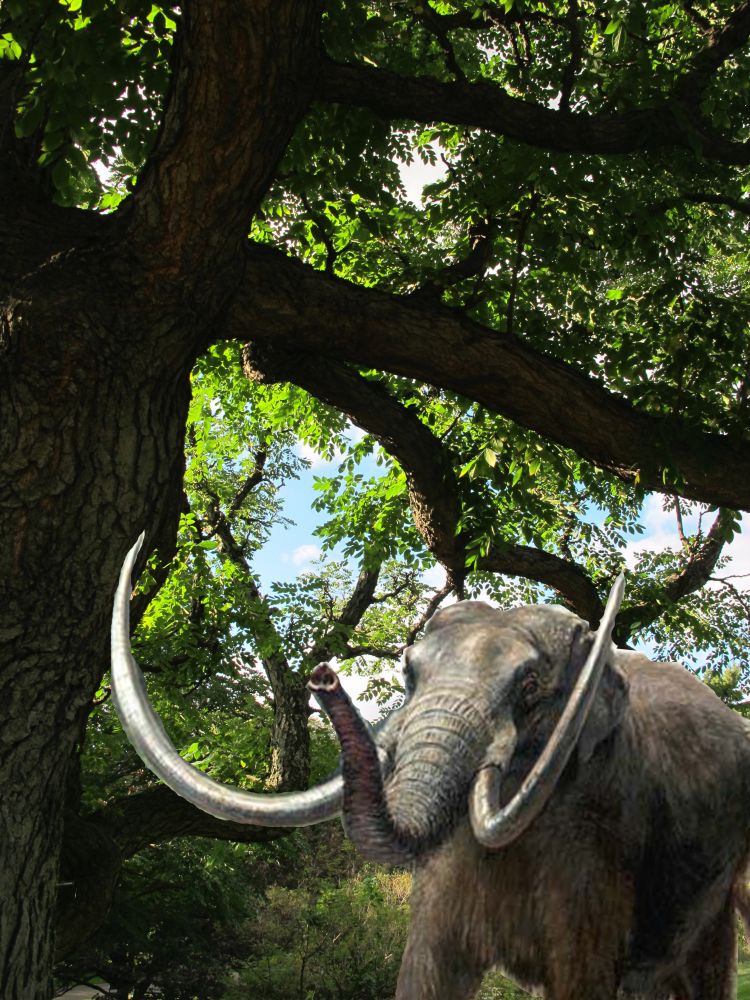Let me preface this by saying that the Kentucky coffeetree is one of my favourites: in Latin, Gymnocladus is borrowed from the Greek word for “naked branch,” which is quite an appropriate description for a tree species that stays dormant at least six months of the year (often they are the last tree to leaf out in the spring).

They are not a common species in Ontario – listed as Threatened with the Ontario Species At Risk Act – limiting their planting to landscape and single-specimen projects. One of the reasons for such a small population is that they were once cut heavily for their timber, which dries to a beautiful chocolate brown colour. It is also very difficult for the Kentucky coffeetree to sprout new seedlings, as it has no natural “predators” (i.e. little helpers like squirrels and other mammals) that can easily move the seeds to new areas.
The Kentucky coffeetree’s leaves are massive – that’s really the only way to describe them. They are doubly compound, meaning they have one main stem with more stems coming off of it – all covered with small almond-shaped leaflets. You may think I’m kidding about the massive part, but one leaf can grow almost a metre long! When autumn comes, these leaves tend to fall off in one piece like a palm frond – making my wonderfully caring homeowners worry that a full branch has broken off their new tree.

The tree’s shape starts off rounded, as it takes a few years for the main trunk to start branching out (think hockey stick growing out of the ground). As the tree matures, it maintains an upright oval outline with dappled shade beneath. In the winter, it has a bit of a scraggly appearance (think haunted house). But its beautiful bark is heavily textured even in its younger years with swirled ridges becoming more plated with age. This tree definitely doesn’t miss anything in the winter interest category.
Did you know it is actually part of the legume family? You would expect it to have some sort of bean – and it does! Only the female trees produce small pods), which stay on the tree until dry. Inside the pod you find green goo (you can’t make this stuff up) and small seeds. When the seeds are collected for nursery harvesting, the seed coat must be removed using a two-hour acid bath. It is believed that before the last ice age, the seeds of the Kentucky coffeetree were dispersed by Mastodons and other similarly large vegetarian mammals who ate the pod and seeds (shout outs to the Woolly Mammoth!).

Now, if you’ve made it this far and still are interested in the Kentucky coffeetree (and believe me, it is a popular tree), it does have something special for you. Look at the branches where this year’s leaves have fallen – there will be a pretty little outline of a heart waiting for you. LEAF offers the Kentucky coffeetree as part of our Backyard Tree Planting Program, so if you want a tree that has a great history and lots of visual appeal, contact us today to book a consultation with one of our arborists!
Join me next month when I explore the tree that is a “poplar” tree in difficult site conditions!
The Backyard Tree Planting Program is supported by Ontario Power Generation, York Region, Ontario Trillium Foundation, The City of Markham and Toronto Hydro.
